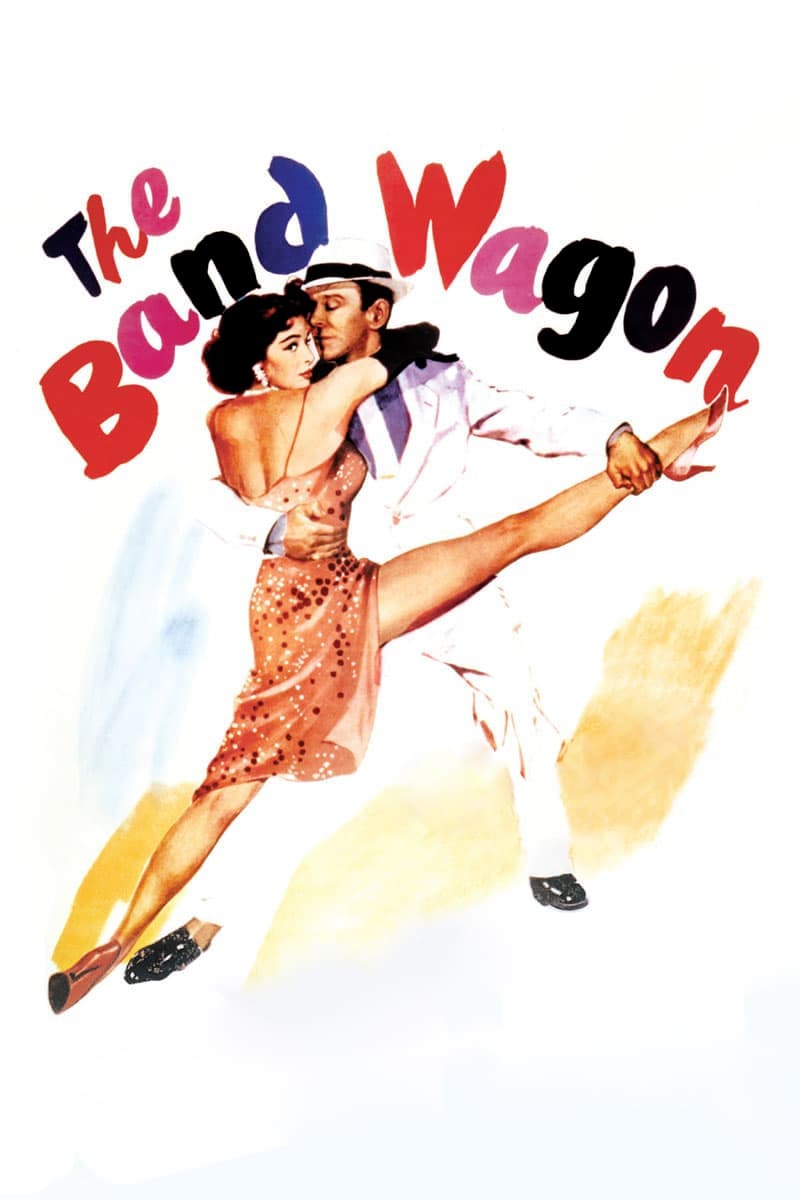
A Broadway artiste turns a faded film star's comeback vehicle into an artsy flop.
17 May The Band Wagon (1953)
42nd Street in the Rain
The colour musical film is a strange beast. Hollywood explored many of its possibilities. And people did buy lots of tickets. But until very recently, musicals were all but dead. That’s because they were never able to create a self sustaining genre, actually what they missed were a few constants that could always be counted on to invent anew.
Instead, we have rehashing of the old. All of them were retreads in the fifties, but I have a particular warm spot for this one because it was blatantly selfreferential.
Astair was indeed washed up. Cyd WAS too tall for him. She did marry her dance teacher and on and on. The writers of the movie appear as characters. The pretentiousness of the community (which was killing the musical) is represented by the Orson Welles character. That trend eventually did the musical in until it found its way (with “Moulin Rouge”) to merge with Wellesian ideas..
So in the face of all else, they follow the “42nd Street” model: a movie in two parts. The first part is a story about earnest players trying to put together a show. The second part is the show itself. In the original model, all the songs have an excuse to appear in the movie because they are part of the show. In that case, much is made of how much sense the show makes.
Since “42nd Street,” musical movies became more like musical shows. It took Minnelli to do it with Judy in “St Louis,” where the songs were intermingled with the movie’s story.
What makes this movie so strange is that they do both. The first half is a “St. Louis” type of musical where the story and music intertwine. The last half is numbers from the show within. It is logical, I suppose, to go one step further than “Singing in the Rain,” in loading on excuses for shifting into song.
Some odd things result, though. The three numbers we see from the show are as disconnected as can be, something that flies in the face of the template. One is a reprise of a two-generation old stage number. Another, the triplets routine, is inspired by Sid Caesar’s TeeVee show, and indeed Nanette would move onto that show as a star. The third number is certainly the first thing conceived in the project. It was modern then, mixed in ballet quite literally and snubbed its nose at noir, the very notion in the movie world that was killing the musical.
Everyone knew it — and it wasn’t a particularly esoteric insight.
For this number, one can see some wardrobe dominos fall: Cyd needs a red dress and she needs to shift hair colour from one colour to another. So she appears in this movie with black hair (shifting to Marilyn blond) instead of her photogenic natural red.
That’s okay as the redhead quotient is made up by Nanette and an early appearance of Julie Newmar (as a catwoman-like temptress.
That last number is often referenced as a touchstone of an entire era merely on its appearance. But it also is an entire course in film history, That one scene makes the movie important, but the first half is a pretty dreadful slog getting there.
Posted in 2005
Ted’s Evaluation — 3 of 3: Worth watching.


No Comments